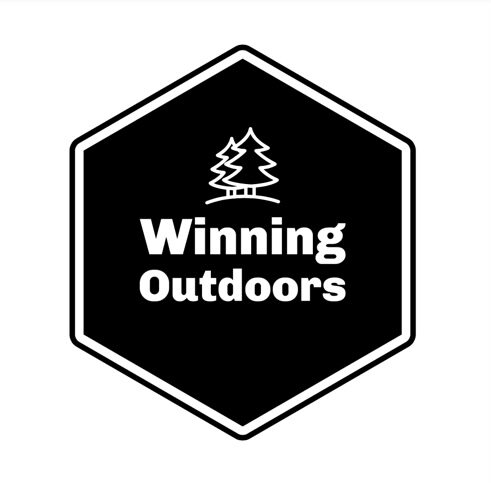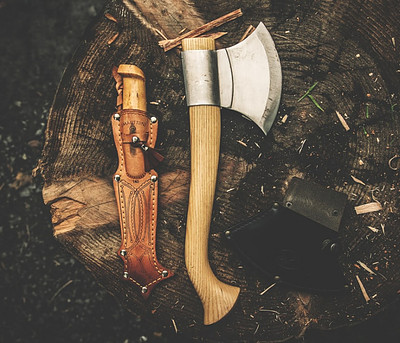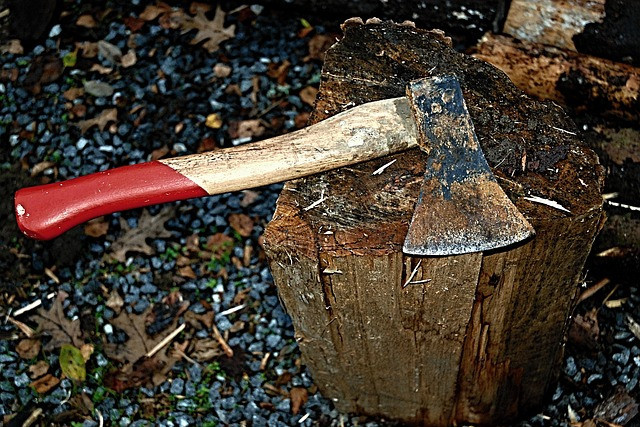Packing a hatchet or an axe is something that has long been considered for camping trips, so you’re not alone. Yes, the list of items one should take on a camping trip could become lengthy, which is why it is important to find tools that can be used for multiple purposes.
When considering a hatchet, think about the items that you are already taking vs. the possibility of using a hatchet to free up some space. Being the requirements for different activities require different tools, today we’re just focused on camping.
Should I Take a Hatchet Camping?
Deciding whether to carry a hatchet on a camping trip may seem like a difficult decision. It’s not. Not only should you carry one, but it should also be a priority. Here’s why:
- Multi-purpose
- Easier portability
- Protection
Durability
According to Trail and Summit, the possibility of hatchet uses are lengthy which we’ll get into later. First, let’s talk about what to look for when picking out a hatchet.
The size and weight you should look for are relative to what your uses will be. Smaller and lighter are better for maneuverability but will reduce striking power whether chopping or using the head as a hammer. On the opposite end of the spectrum, going larger will increase your weight, reduce portability and before long you’re back at the traditional axe.
Construction material should also be considered. The type of metal used for the head should be durable and resistant to harsh environments. 420 SS or certain carbon steels such as 5150, 5160, 1050-1090 are popular types among enthusiasts.
I personally prefer a wooden handle (hickory) for my camping hatchet. With that said, there are numerous suitable options available such as SS, composite, and nylon.
Diversity
According to Van Camping Life, small axes or hatchets, are the best choice while camping. Great for building campfires and easier to control for getting the right size kindling.
There are many chores around a campsite that you’ll find yourself using your hatchet for, whether building a makeshift shelter, cleaning your catch or kill of the day, or maybe it’s the hammer you didn’t think you’d need.
One thing to remember when chopping or using as a hammer is that there is the potential for flying debris. Not a bad idea to go ahead and get you a pair of safety glasses to keep with your gear.
Portability
According to Outside Pulse, there are several factors to be considered when looking for a hatchet vs. a traditional axe.
First, we’ll look at the downside. Having a hatchet reduces the force of the strike when chopping or cutting wood. It may also be harder to aim when using a hatchet one handed.
With that said, we are talking about camping here, not homesteading and living off the land. The number of trees you’ll need to cut down for your cabin will require more appropriate tools.
Now let’s look at the pros. Having a hatchet is much easier to handle than an axe. It is smaller so can fit in or on your pack. It is designed for one handed use, so if you start to get tired you can always swap hands. Being that it is lightweight, that shouldn’t be an issue when compared to a traditional axe.
Conclusion
In wrapping up, the uses of a small axe or hatchet are virtually endless when it comes to camping and the outdoors. The type and size are up to you.
People are sized differently as are hatchets. You’ll need to determine what your needs are, what construction material you want and what fits your hands the best.
I hope that you have found this information useful. Soon, you’ll have a new hatchet to pack with your gear and be whittling away before you know it!
Check out our other posts here!
Keep Winning Outdoors!


